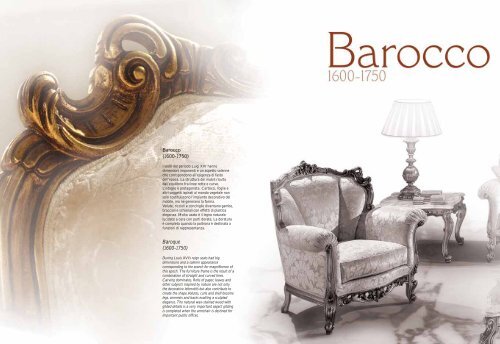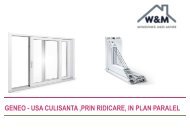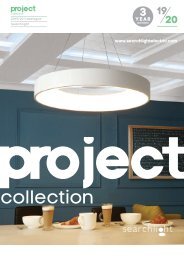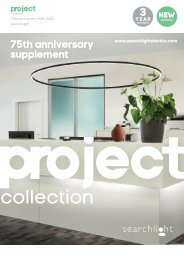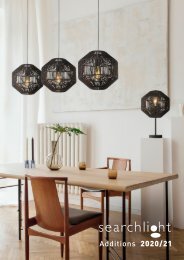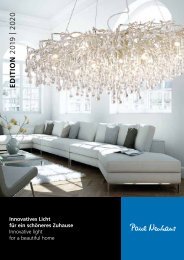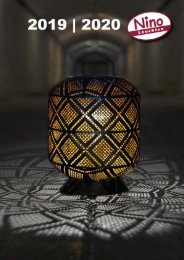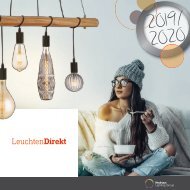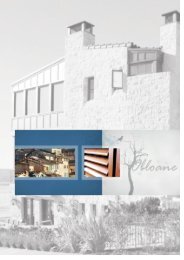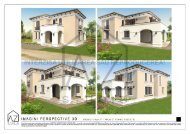Create successful ePaper yourself
Turn your PDF publications into a flip-book with our unique Google optimized e-Paper software.
Barocco<br />
(1600-1750)<br />
I sedili del periodo Luigi XIV hanno<br />
dimensioni imponenti e un aspetto solenne<br />
che corrispondono all’esigenza di fasto<br />
dell’epoca. La struttura dei mobili risulta<br />
dall’equilibrio fra linee rette e curve.<br />
L’intaglio è protagonista. Cartocci, foglie e<br />
altri soggetti ispirati al mondo vegetale non<br />
solo costituiscono l’impianto decorativo del<br />
mobile, ma ne generano la forma.<br />
Volute, riccioli e conchiglie diventano gambe,<br />
braccioli e schienali con effetti di plastica<br />
eleganza. Molto usato è il legno naturale<br />
lucidato a cera con parti dorate. La doratura<br />
è completa quando la poltrona è destinata a<br />
funzioni di rappresentanza.<br />
Baroque<br />
(1600-1750)<br />
During Louis XVI’s reign seats had big<br />
dimensions and a solemn appearance<br />
corresponding to the search for magnificence of<br />
this epoch. The furniture frame is the result of a<br />
combination of straight and curved lines.<br />
Carving dominates. Rolls of paper, leaves and<br />
other subjects inspired by nature are not only<br />
the decorative leitmotifs but also contribute to<br />
create the shape.Volutes, curls and shell become<br />
legs, armrests and backs exalting a sculpted<br />
elegance. The natural wax-stained wood with<br />
gilded details is a very important aspect gilding<br />
is completed when the armchair is destined for<br />
important public offices.


